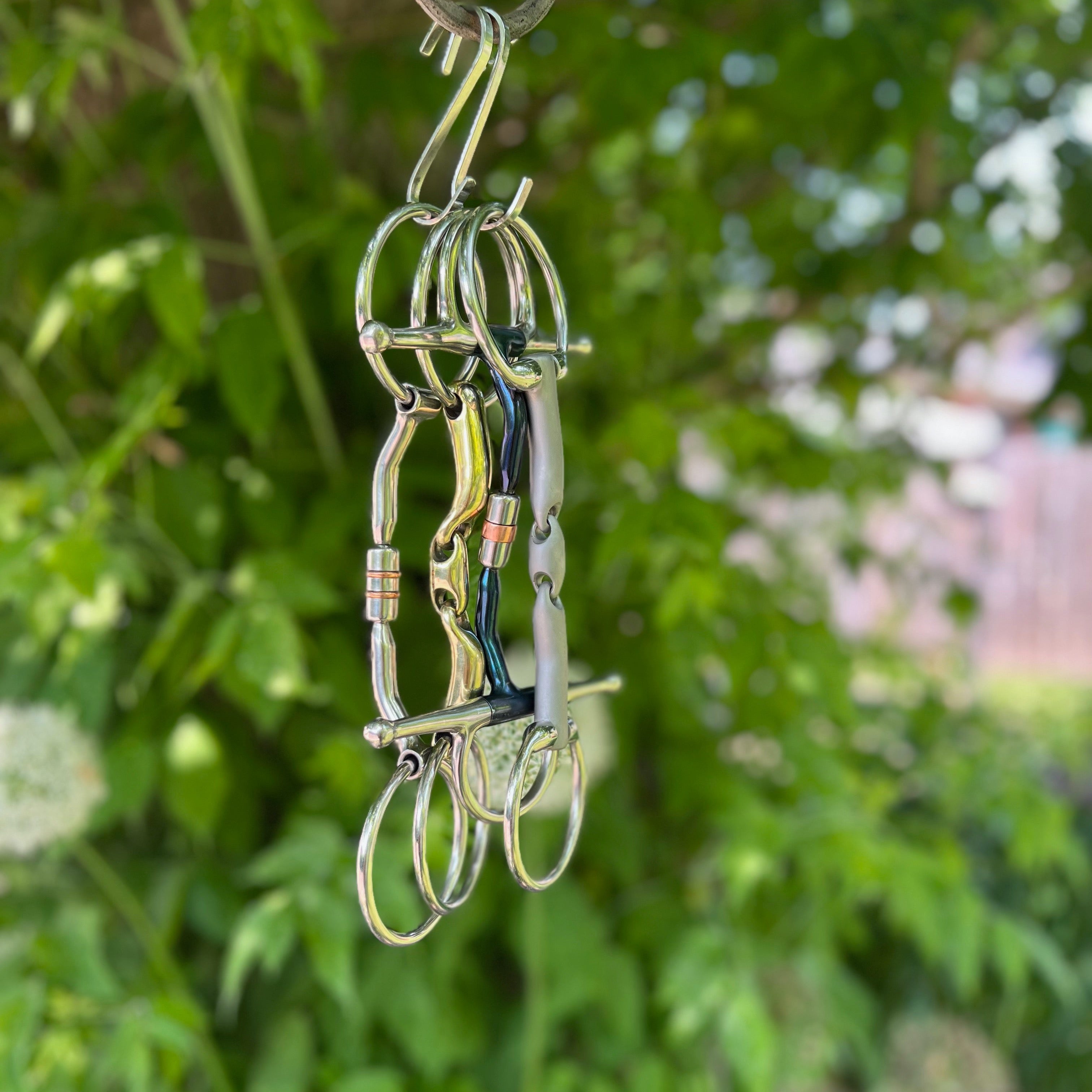Article: Tips For Finding The Right Bit Size

Tips For Finding The Right Bit Size
Did you know that finding the right bit can make a huge difference in your riding experience?
We're dispelling some myths and have gathered some fascinating insights from the latest research that you might wanna consider when picking the size of your next bit.
1. Gender Matters: Mares generally have narrower mouth widths compared to geldings.
When choosing a bit for your mare, you might consider choosing one that is less thick even though the "milder" bits are typically considered the thicker ones.
If the bit is too large it will press against the palate of the mouth or create excessive pressure on the tongue leading to discomfort and unwanted behaviours such as head shaking or gaping of the mouth.
In addition to considering the thickness, opt for a bit length that matches her mouth width or slightly extends (up to 0.5 cm) on each side for optimal comfort.
2. Different breeds come in different shapes: Did you know that different horse breeds have varying oral dimensions?
Draft horses will be able to acommodate a slightly larger mouthpiece while ponies may require a narrower bit. Thoroughbreds often have narrower mouth widths and often take better to thinner bits.
The key message is clear - keep your horse's breed in mind when selecting the right fit.
3. Age Impacts Fit: Did you know that horses' oral dimensions can change as they age?
Young horses are still growing, so their bit fit might need frequent adjustments. It is worthwhile monitoring changes in mouth shape and size over time.
Older horses on the other hand may gain more bit space as they age, allowing for a thicker fit as they age.
A great time to check the mouth is when your horse is sedated for the annual dental exam. If you notice changes it might be a good idea to tweak the choice of the bit to ensure it suits your horse's evolving needs.
4. Trial and Observation: Ultimately the right bit should be determined by your horse's reactions and riding experience. Have a knowledgeable person observe your horse from the ground when using various bits. They'll communicate their comfort levels through their behavior, helping you identify the best fit.
5. Comfort First: A bit that fits well and doesn't cause discomfort can noticeably improve your riding experience. If your horse is healthy, up to date with their dental work and eager to work, the right bit could take your communication to the next level.
By taking into account your horse's gender, breed, age, and individual preferences, you can find the perfect bit that ensures their comfort and enhances your riding experience.
A well-fitted bit contributes to a healthier and more enjoyable journey for both you and your four-legged companion.

